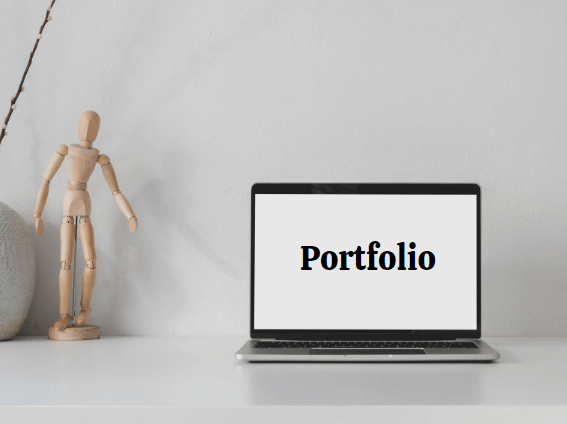What Is a Portfolio?
What Is a Portfolios? And How to Build a Portfolio? A portfolio is a collection of financial investments such as stocks, bonds, commodities, cash, and cash equivalents, including closed-end funds and exchange-traded funds (ETFs).
A portfolio is a broad term that can include any financial asset, including real estate or collectibles, but people typically use it to refer to someone’s income-earning assets.
People generally believe that a portfolio consists of stocks, bonds, and cash.
A portfolios can include a wide range of assets including real estate, art, and private investment.
Some people and organizations manage their own investment departments, while many hire a financial advisor or other financial professionals to manage them on their behalf.
How an Investment Portfolio Works
An investment portfolio can help you grow your funds to achieve future financial goals, such as a substantial retirement fund. Know more about which is the Best Investment Accounts For Young Beginners.
The basic premise is that you buy investments, which increase in value, and thus you make money.
Asset Allocation
The different types, or categories, of investments you choose for your portfolio, are referred to as asset allocation.
Assets typically fall into three main categories: equity (stocks), fixed income (bonds), and cash equivalents (savings and money market accounts).
Diversification
To avoid being over-exposed to losses within a single company or industry, investors often choose to diversify their portfolios among multiple investments across asset classes.
Different Types of Portfolios
There can be many different types of portfolio and portfolio strategies for investors and wealth managers.
You can also choose multiple portfolios, the contents of which may reflect a different strategy or investment scenario, structured for a different requirement.
1. Hybrid Portfolios
The hybrid portfolio approach diversifies across asset classes. Building a hybrid portfolio requires taking positions in stocks as well as bonds, commodities, real estate, and even art.
Typically, a hybrid portfolio has relatively fixed ratios of stocks, bonds, and alternative investments.
This is beneficial, because historically, stocks, bonds, and options have exhibited less than the perfect correlation with each other.
2. Growth Portfolios
A growth portfolio, also known as an aggressive portfolio, involves taking a greater level of financial risk for the possibility of higher returns.
The underlying assets in an aggressive portfolio typically assume great risk in the pursuit of great returns.
Aggressive investors look for companies that are in the early stages of their development and have a unique value proposition. Most of them are not yet common household names.
Investors in growth portfolios are prepared to handle short-term fluctuations in the underlying value of their holdings for the potential of long-term capital gains.
high-risk this type of portfolio is ideal for someone with a high-risk tolerance or a long-term investor.
3. Income Portfolios
An income portfolio has been created with a focus on creating recurring passive income. Instead of looking for investments, which can result in the greatest long-term capital gains.
Investors look for investments that pay regular dividends with little risk to the underlying assets that earn those dividends.
This type of portfolio is ideal for risky investors with a short to medium time horizon.
4. Value Portfolios
A value portfolio is made up of a value stock, or stock, compared to the overall financial picture of the company.
Value investors buy those short-term stocks and then hold them when the price rises.
Instead of focusing on income-generating stocks, investors with a price portfolio tend to buy shares for extended periods with the goal of long-term growth.
This type of portfolio is ideal for investors with moderate risk tolerance and a long time horizon.
5. Defensive Portfolios
A defensive stock is one in an industry with relatively low volatility that does not fluctuate heavily with the market.
In other words, defensive stocks represent companies whose products are always in demand, no matter the state of the economy.
Defensive stocks do well in bad times as well as in good times. At any given time, no matter how bad the economy is, companies that make the necessary products for everyday life will survive.
A defensive portfolio is made up of low-volatility stocks and is intended to limit market declines.
Defensive departments often have fewer risks and fewer potential rewards. These portfolios work well for long-term horizons, as they lead to small but sustained growth.
6. Balanced Portfolios
A balanced portfolio is one of the most common options used by investors. The purpose of this type of portfolio is to reduce volatility.
This typically includes income-generating, medium-growth stocks, as well as a large percentage of bonds.
A mixture of stocks and bonds helps an investor reduce risk no matter which direction the market is heading. This type of portfolio is ideal for anyone with low to moderate risk tolerance and a mid to long horizon.
How to Build a Portfolios
1. Decide How You’ll Manage Your Portfolios
For some people, investing is not fully understood which prevents them from starting. But for those who do not feel comfortable managing their own portfolio, there are other options.
The first decision you make when building your portfolio is how you want to manage it. Some options include:
- DIY portfolio management
- Using a robo advisor
- Hiring a financial advisor or money manager
2. Consider Your Time Horizon
Your time horizon is the amount of time before you need the money to invest.
If you are investing for retirement which is about 30 years away, then your time horizon is 30 years. Experts generally recommend reducing your portfolio risk as your time horizon shrinks.
3. Identify Your Risk Tolerance
Everyone has a different appetite for risk. Some people can afford to make exciting investments, while others want the security to know their money when they need it.
Your risk tolerance has a major impact on how you build your portfolio.
An over-risk-affected investor may choose to stick with investments such as bonds and index funds. But someone with high-risk tolerance can locate real estate, personal stocks, and small-capitalized mutual funds.
4. Focus on Diversification
Diversifying your portfolios is an effective way to reduce losses so that if an investment performs poorly, it does not affect your entire portfolio. You can diversify both between and within property categories.
For example, you can divide your money into stocks, bonds, real estate, and commodities – property categories.
But you can diversify into a specific asset class rather than just buying stocks from a company or within an industry, you can invest in an index fund that invests in stocks across industries to get a healthy mix.
5. Rebalance as Needed
Rebalancing occurs when you adjust your holdings to regain your original asset allocation. Some of your investments will grow faster than others, which means they will start taking a larger percentage of your portfolio.
To maintain your desired asset allocation, you may need to sell some assets (including those you have experienced growth in) and buy other types of assets (those that do not experience the same level of growth or increase in value have decreased).








